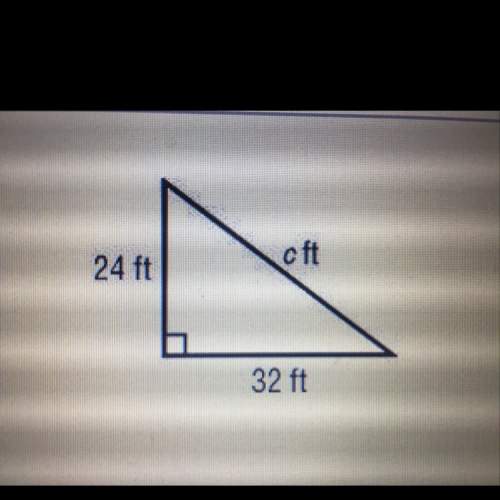Parallelograms
Pre-Test Active
TIME REMAINING
57:48
1 2 3
Which sequence c...

Mathematics, 10.05.2021 19:30 mjabloom17
Parallelograms
Pre-Test Active
TIME REMAINING
57:48
1 2 3
Which sequence could be used to prove that AD = BC?
Figure ABCD is a parallelogram
B
C
First prove A ABC is congruent to ACDA, and then
state AD and BC are corresponding sides of the
triangles
O First prove ABC is similar to ACDA, and then state
AD and BC are opposite sides of the parallelograms.
Alust prove OABCD is congruent to OCDAB, and then
state AD and BC are corresponding sides of two
parallelograms
O First prove OABCD is similar to OCDAB, and then
state AD and BC are opposite sides of the
parallelograms.
Save and Exit
Next
Submit
Mark this and return

Answers: 2
Another question on Mathematics

Mathematics, 21.06.2019 16:10
The number of hours per week that the television is turned on is determined for each family in a sample. the mean of the data is 37 hours and the median is 33.2 hours. twenty-four of the families in the sample turned on the television for 22 hours or less for the week. the 13th percentile of the data is 22 hours. approximately how many families are in the sample? round your answer to the nearest integer.
Answers: 1

Mathematics, 22.06.2019 02:00
Sally deposited money into a savings account paying 4% simple interest per year. the first year, she earned $75 in interest. how much interest will she earn during the following year? show your work and explain your reasoning in the space provided below.
Answers: 2

Mathematics, 22.06.2019 03:00
In this problem, we explore the effect on the standard deviation of multiplying each data value in a data set by the same constant. consider the data set 14, 6, 8, 15, 15. (a) use the defining formula, the computation formula, or a calculator to compute s. (round your answer to one decimal place.) s = 4.28 (b) multiply each data value by 3 to obtain the new data set 42, 18, 24, 45, 45. compute s. (round your answer to one decimal place.) s = 12.83 (c) compare the results of parts (a) and (b). in general, how does the standard deviation change if each data value is multiplied by a constant c? multiplying each data value by the same constant c results in the standard deviation remaining the same. multiplying each data value by the same constant c results in the standard deviation being |c| times as large. multiplying each data value by the same constant c results in the standard deviation increasing by c units. multiplying each data value by the same constant c results in the standard deviation being |c| times smaller. (d) you recorded the weekly distances you bicycled in miles and computed the standard deviation to be s = 3.8 miles. your friend wants to know the standard deviation in kilometers. do you need to redo all the calculations? yes no given 1 mile ≠1.6 kilometers, what is the standard deviation in kilometers? (enter your answer to two decimal places.)
Answers: 1

You know the right answer?
Questions

Mathematics, 10.12.2020 08:30

Mathematics, 10.12.2020 08:30


Mathematics, 10.12.2020 08:30


Mathematics, 10.12.2020 08:30


English, 10.12.2020 08:30

Mathematics, 10.12.2020 08:30


English, 10.12.2020 08:30


Mathematics, 10.12.2020 08:30



Mathematics, 10.12.2020 08:30


Mathematics, 10.12.2020 08:30

English, 10.12.2020 08:30

Mathematics, 10.12.2020 08:30




